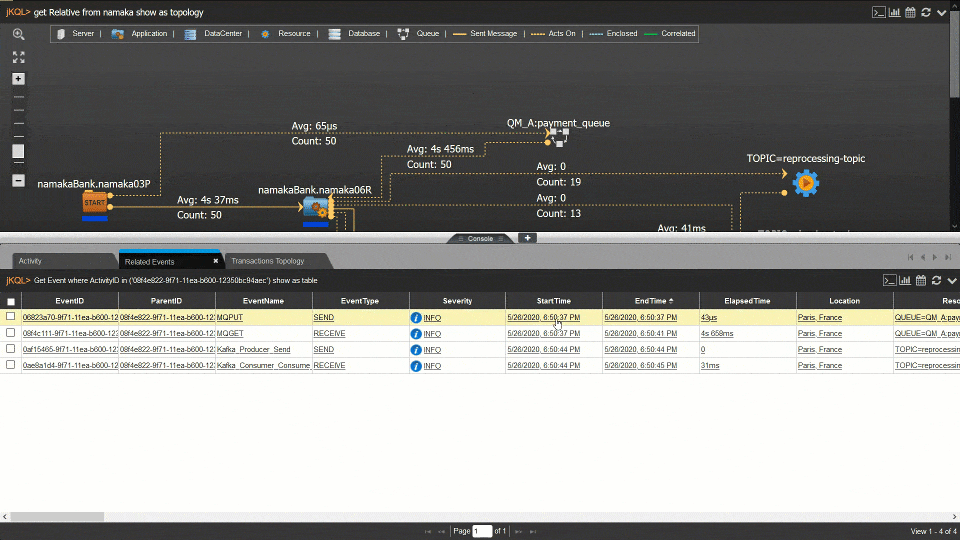Leveraging Your Integration Infrastructure
Written by Sam Garforth and Steven Menges
The investment your organization has made in integration infrastructure (i2) over the years was necessary as the organization and the IT infrastructure grew, but it has likely been considered a necessary evil by senior management. However now that investment can be leveraged in two important new ways.
Administration - Speed-to-market Upgrade
If you’re obsessed with CI/CD Pipelines and “Speed-to-market” for new applications and updates, and your development process relies on the administrators of IBM MQ, IIB/ACE, TIBCO EMS, and/or Kafka, you can upgrade your speed by putting the power in the hands of the developers.

Speed-to-market is critical today, and middleware administrators can now securely delegate management tasks to Development, DevOps, and QA (Quality Assurance) team users through a self-service web portal with Nastel Navigator version 10.3. This improves delivery times for new and existing applications while providing an audit trail of all the changes. Think about your CI/CD pipeline and all the development / DevOps efforts coming up and think about the potential bottlenecks related to the organization’s small team of hardworking administrators who currently have to work on each developer’s request, one at a time. That can end starting today by utilising the right i2 management tool for the job.
The Navigator 10.3 release includes several exciting new performances and speed-to-market features for multi-middleware environments, including cross-application i2 Management, Roll-back, Editing, Scheduling, Automation, and more, for every combination of these enterprise integration technologies:
- IBM MQ, IIB (IBM Integration Bus), IBM ACE (App Connect Enterprise)
- TIBCO EMS
- Kafka (all distributions)
If you’ve been thinking about all the middleware version updates your need to do, there is support for all the latest releases of crucial enterprise technologies, including features to assist with upgrades to:
- IBM MQ 9.2.4
- IBM z/OS V2.5, and AIX 7.3, plus the latest releases of Linux, Windows, Cloud infrastructures, and more
Turning an operations burden into a competitive advantage is now as simple as turning on a single Integration Infrastructure Management (i2M) tool. It is available any way you’d like it, and it is even available on Red Hat OpenShift 4.3 through 4.9.
Intelligence from Integration
If improved analytics, transaction and message tracking, or visualization of your IoT devices are on your list, there is something new for you as well.
The new Nastel XRay 1.4 plugs data and analytics gaps for enterprises like yours to enable insights from the data in your existing i2 layer, including your IoT and containers.

XRay is the only industry solution that includes analytics of middleware messaging and other i2 data. Combined with data streams, log files, and other machine data, it maps against time to present a topology model of how the data and transactions flow through the entire enterprise application stack. Machine Learning / Artificial Intelligence (ML/AI) is applied to compare the topology of a user’s experience to the historical record of similar requests to identify the subtle, early indicators of a performance anomaly. Automation is applied for both rapid remediation, and pre-emptive actions as the system learns and improves.
This release includes enhancements to support IoT infrastructures and integrations seamlessly, containerized environments, and the latest IBM MQ and Red Hat OpenShift updates, including:
- Red Hat OpenShift 4.9 and Red Hat Advanced Cluster Management for Kubernetes 2.4
- IBM MQ: Day 1 Support for IBM MQ 9.2.4, including leveraging new IBM MQ “Streaming Queues” to speed messages into analytics while maximizing performance
- XRay is updated to support OpenShift 4.9 and delivered via an OpenShift 4.9 container
XRay complements other leading analytics and AIOps platforms to complete the picture for a variety of enterprise use cases, including financial services reporting and compliance and transaction tracing and tracking to achieve a dramatically better customer experience (CX). Whether you’re currently using Splunk, AppDynamics, Dynatrace, homegrown/RYO, or other analytics platforms, you’ll want to include the intelligence that resides in your integration layer and you can now do that with XRay. It’s free to try and available now so consider seeing how you can get a real return on the investments your organization has made in messaging middleware and the rest of the i2 part of your IT stack.
Read the full Press Releases:

